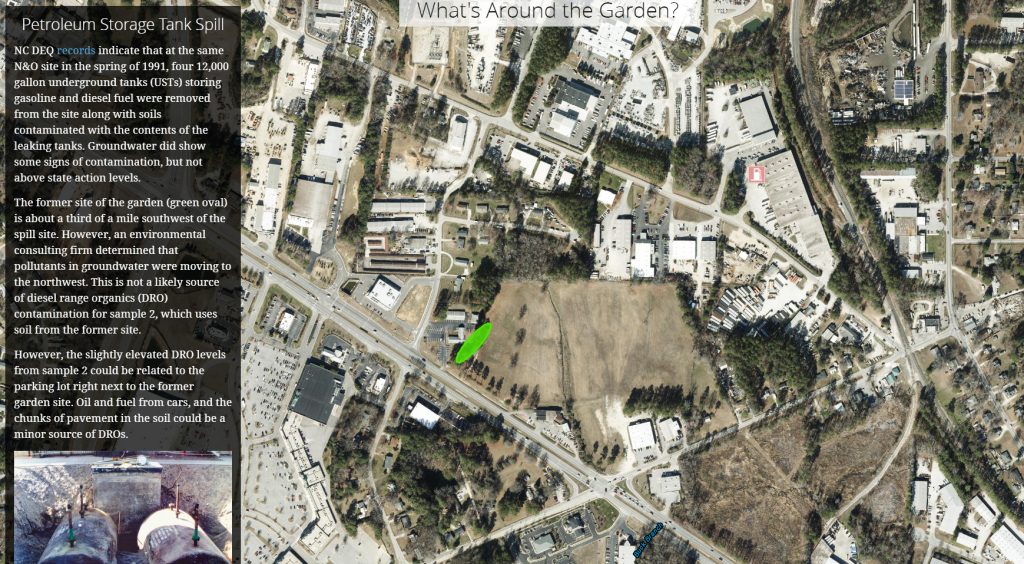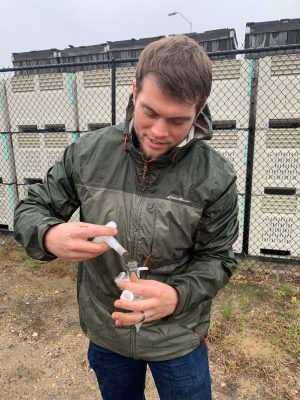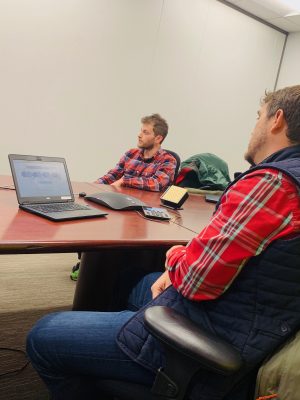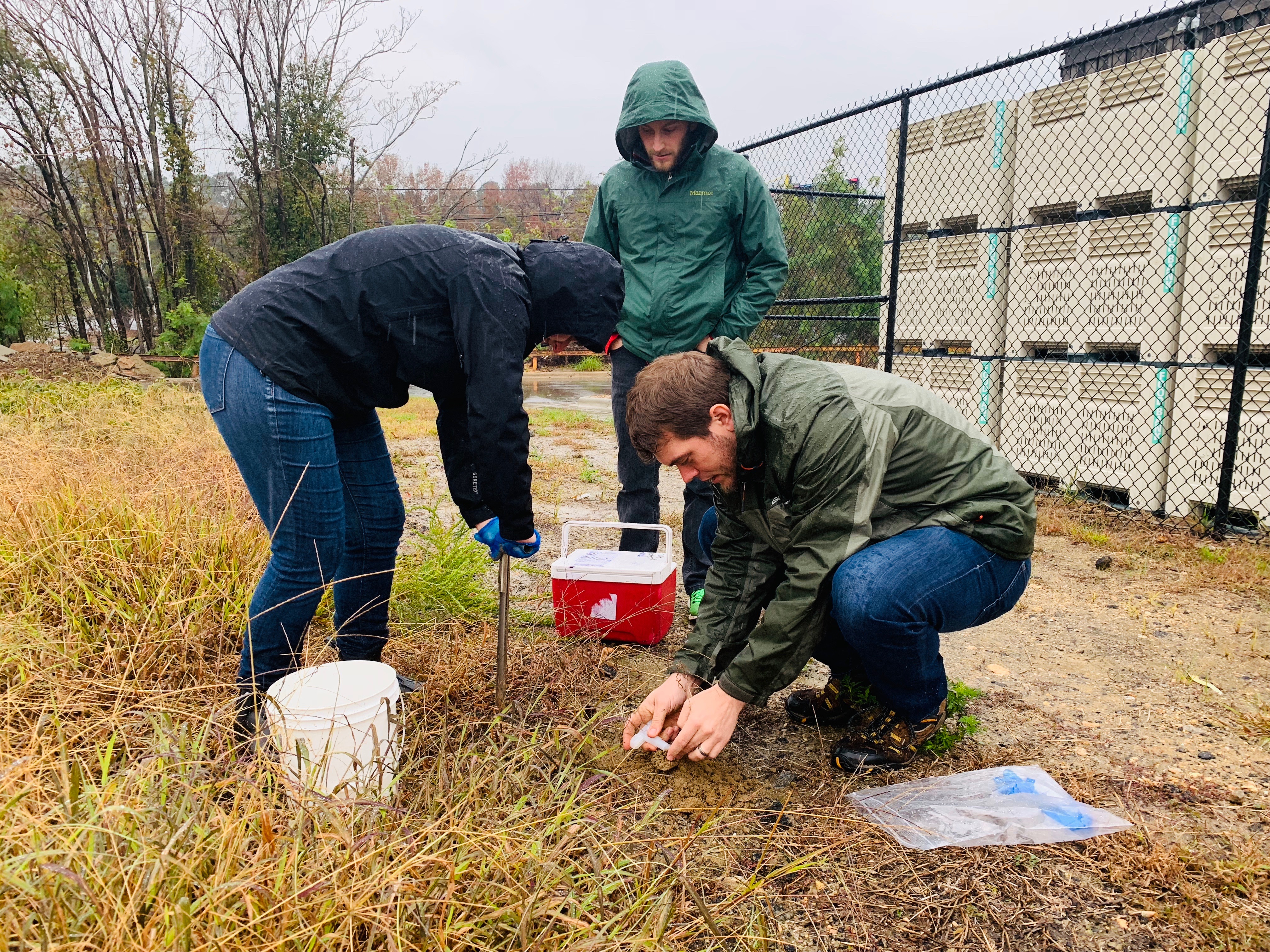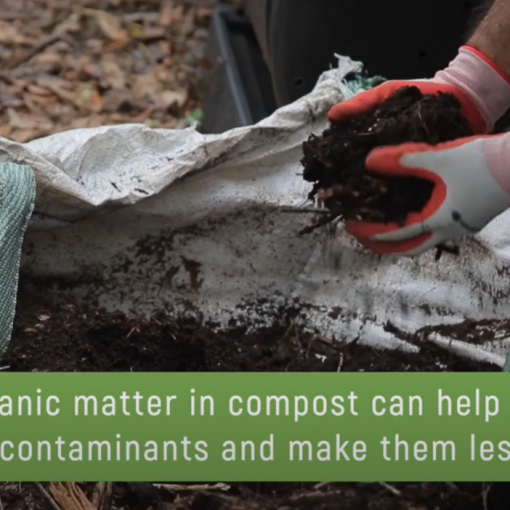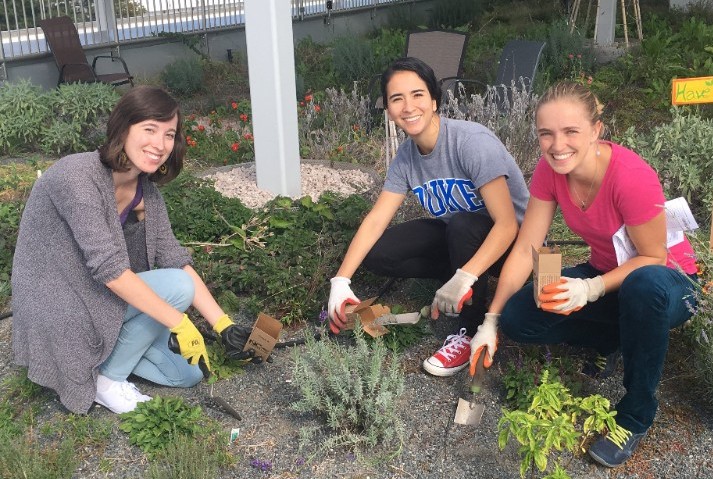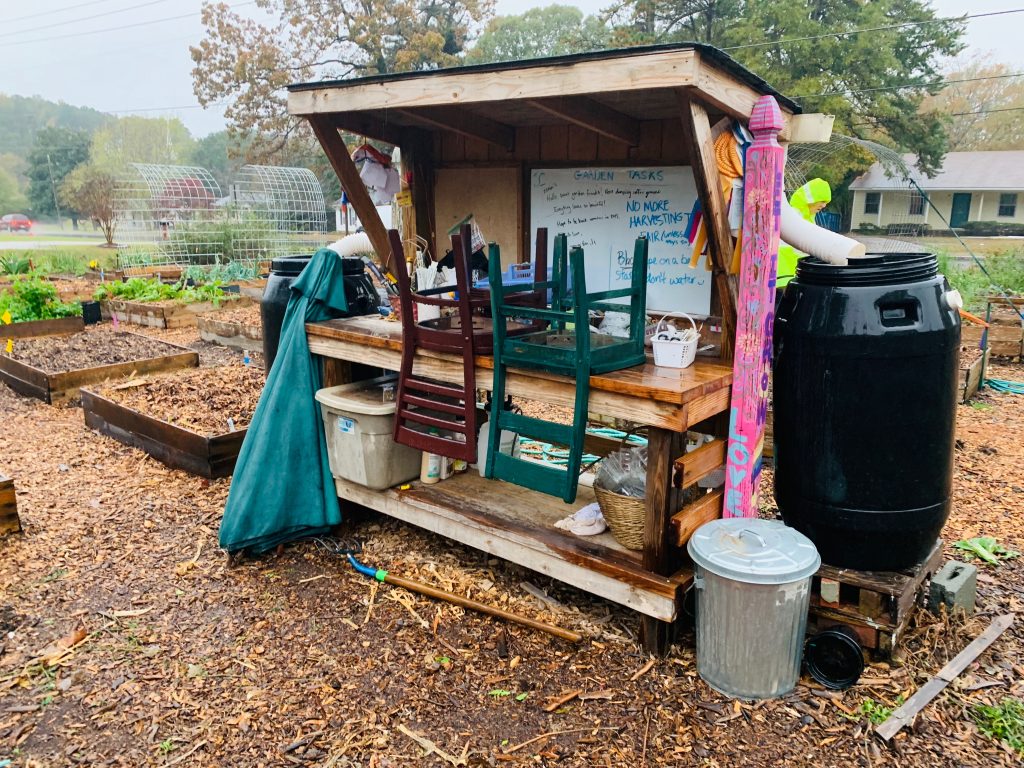
Over the past year, the Duke University Superfund Research Center’s Community Engagement Core (CEC) has partnered with community gardens across North Carolina to test for soil contaminants, consider potential sources of contamination, and discuss gardening best practices.You can learn more about the CEC’s work here and visit our resource page for North Carolina community gardeners. You can also explore our interactive map of potential environmental contamination sources in North Carolina.
Community gardens offer small plots of land to those who may not have space at home and an affordable supplement to supermarket produce. But surrounding soils can reflect an area’s industrial or agricultural legacy, and modern development practices tend not to consider small-scale gardening and soil health. Heavy metals from a long gone factory, engine oil from a nearby road, and plenty more can be found in our soils. The balance between encouraging gardening as a healthy and enjoyable activity and limiting environmental exposure can be tricky.
For the past year we, the Duke Superfund Community Engagement Core (CEC), have partnered with eight community gardens across the state to help them continue gardening in a way that is protective of human health. This entails soil sampling and testing for heavy metals and various hydrocarbons, reporting and discussing the results of these tests with the gardeners, exploring potential sources of contamination, and, if necessary, discussing options to reduce exposure risk. With the initial testing complete, we have been thinking about how to engage with gardeners on these topics in a way that is digestible and useful.
Story Maps Can Contextualize Soil Test Results and Foster Discussion Among Gardeners and Researchers
Our garden partners are the experts when it comes to their gardens and the surrounding neighborhood. Their knowledge is vital when thinking about exposure risk factors and how best to protect human health at the garden. Story Maps–basically a way to tell stories about spatial data and information–can be a useful tool not only to report back test results to the gardeners, but also to encourage further discussions and tease out new ideas about potential contamination sources and garden management.
Back in November, we visited one of our partners, Garner Grows, a community garden in Garner, NC, just south of Raleigh. In addition to some follow up soil testing, we presented story maps to five of the gardeners.
Luckily, our prior soil testing showed that neither the metals nor petroleum hydrocarbons were at levels high enough to cause immediate concern for the health of the gardeners. We discussed some potential contamination sources, but nothing around the suburban setting of the garden stood out as particularly troubling. We highlighted a prior spill from a petroleum storage tank about a mile from the garden site, not because we thought it was a potential source, but instead to highlight the ubiquitous nature of underground storage tanks and the risks they can pose to nearby soils.
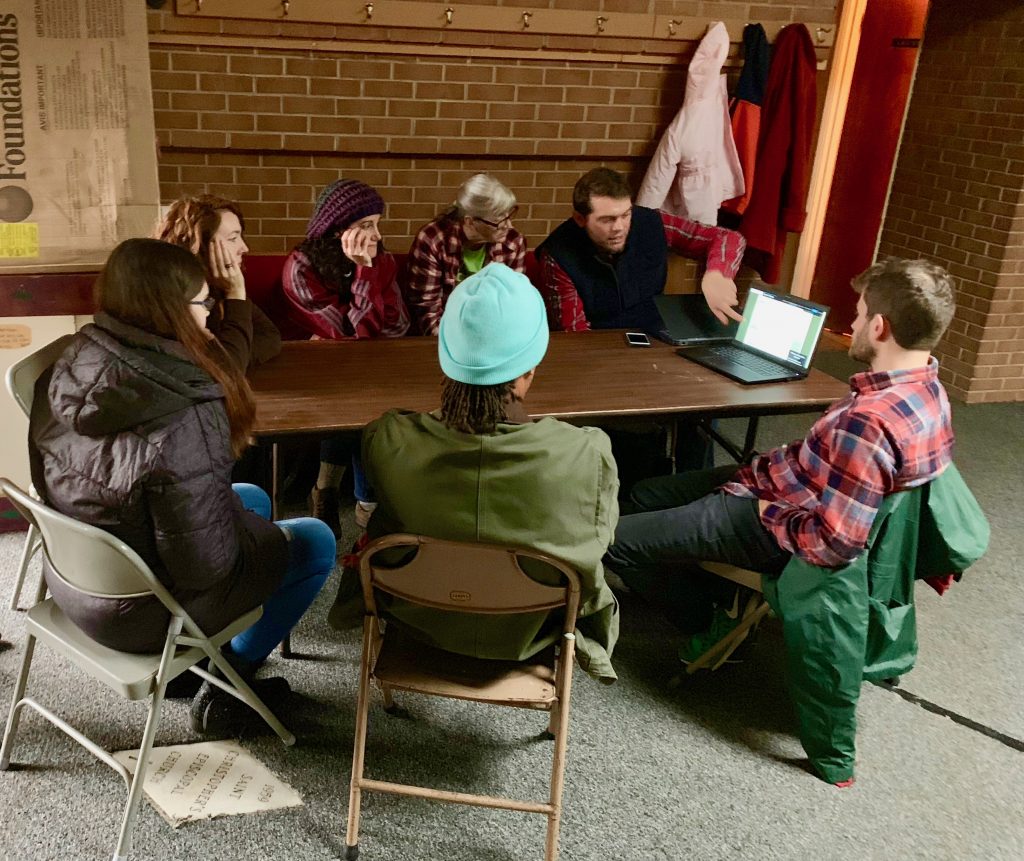
After seeing where this spill took place, one of the gardeners mentioned that before it’s current location, the garden used to be located very near to the spill site (see image below). We knew that the garden used to be located elsewhere, but hadn’t factored its prior location into our research on potential contamination sources. After our meeting with Garner Grows, we looked more closely at the spill, and determined that it wasn’t a likely source of soil contamination. Nonetheless, this is the type of discussion that we think a story map can help foster, and we plan to create and discuss story maps with each of our eight partners.
Feel free to scroll through the Garner Grows story map. Be on the lookout for more posts on our community gardens project.
